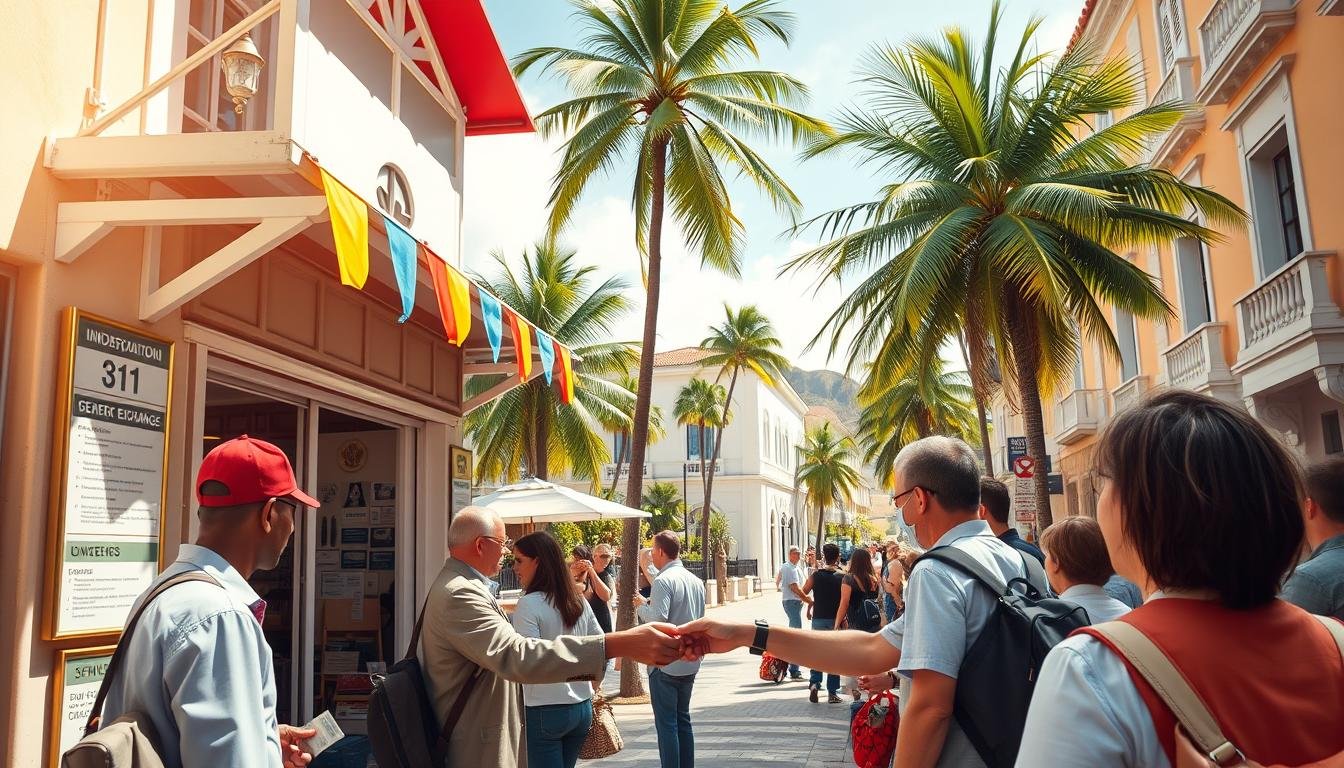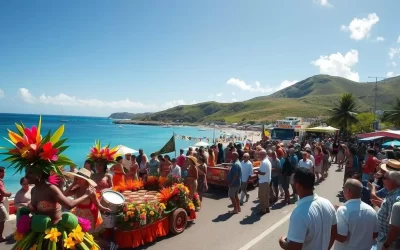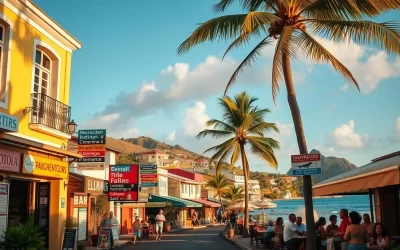✓ Accommodations✓ Flights✓ Rental Cars
Did you know that over 80% of travelers face challenges with currency exchange or payment methods during their trips? Managing your money efficiently can make or break your travel experience. Whether you’re dining at a local restaurant, booking a hotel, or exploring the island, understanding the local currency and payment options is key.
This guide is designed to help you navigate exchange rates, avoid hidden fees, and choose between cash and cards. You’ll also learn practical tips like monitoring the exchange rate and informing your bank about your travel plans. With these insights, you can focus on enjoying your trip without financial stress.
Ready to make your next adventure seamless? Let’s dive into the best practices for handling money like a pro.
Understanding the Importance of Currency and Payment Methods in St. Barts
Handling money wisely can transform your travel experience. When visiting a new destination, knowing how to manage your finances ensures a smooth and enjoyable trip. In St. Barts, understanding the local currency and payment options is essential for avoiding unnecessary stress.
Why Local Currency Matters
Using the official local currency is a smart move. It helps you avoid extra fees and ensures smoother transactions. While some tourist spots may accept US dollars, sticking to the local currency often gets you better deals, especially at local markets and small restaurants.
For example, paying in the local currency can save you from unfavorable exchange rates or hidden charges. It’s also a great way to support local businesses and immerse yourself in the culture.
The Role of Payment Options for a Stress-Free Trip
Having the right mix of cash and cards is key. In bustling tourist areas, credit cards are widely accepted, making them convenient for larger purchases at hotels or resorts. However, in quieter local spots, cash is often preferred for smaller transactions.
Here’s why a combination works best:
- Cards offer security and ease for big-ticket items.
- Cash is handy for tips, small vendors, or places that don’t accept cards.
By planning ahead and carrying both, you’ll be prepared for any situation, whether you’re exploring the island or relaxing at a beachside restaurant.
Navigating Currency Exchange and Exchange Rates
Securing the best exchange rates starts with smart pre-trip strategies. By planning ahead, you can avoid high fees and unfavorable rates at airports or hotels. Monitoring the mid-market rate and using currency converter apps can help you stay informed and make better decisions.

Pre-Trip Exchange Strategies
Ordering currency in advance from your bank or an online platform is a good idea. This ensures you get competitive rates and avoid last-minute stress. Apps like XE or OANDA can help you track rate fluctuations and time your exchange for the best deal.
Withdrawing small amounts of cash during your trip keeps you flexible. It also helps you manage your budget while minimizing the risk of carrying too much money. Always inform your bank about your travel plans to avoid issues with your debit or credit card.
Local Banks and Cambio Centers
Local banks and specialized cambio centers often offer better rates than airport kiosks or tourist hubs. For example, CXI provides a Best Rate Guarantee, ensuring you get the most value for your money. Their branches are conveniently located and open seven days a week.
Here’s a quick comparison of exchange options:
| Option | Exchange Rate | Fees | Convenience |
|---|---|---|---|
| Local Bank | Competitive | Low | High |
| Cambio Center | Very Competitive | Low | Medium |
| Airport Kiosk | Unfavorable | High | High |
By choosing the right option, you can save money and enjoy a smoother travel experience. Always carry a mix of cash and cards to handle any situation, whether you’re dining at a local restaurant or booking a resort stay.
Using Cash, Credit Cards, and Digital Payment Solutions
Choosing the right payment methods can make your travel experience seamless. Whether you’re dining at a restaurant, booking a hotel, or exploring the island, having a balanced mix of payment options ensures smooth transactions. Let’s dive into when to use cash, cards, or digital solutions.
When to Use Cash vs. Cards
Cash is often preferred for smaller purchases, like tips or local market transactions. It’s also handy in areas where cards aren’t widely accepted. For example, small vendors or rural spots may only take cash.
On the other hand, credit cards are ideal for larger expenses, such as hotel bookings or upscale restaurants. They offer security and convenience, especially in tourist-heavy areas. Always carry both to handle any situation.
Benefits of Digital Payments and Mobile Wallets
Digital payment platforms like PayPal or mobile wallets are gaining popularity. They offer faster transactions and advanced security features, making them a great option for travelers.
For instance, using a mobile wallet at a resort or tourist area can save time and reduce the need to carry cash. Plus, they often come with lower transaction fees compared to traditional methods.
“Digital payments are transforming the way we travel, offering speed and security in every transaction.”
Before your trip, notify your bank to avoid unexpected holds or fees on your card. This simple step ensures your credit or debit card works smoothly during your travels.
By understanding when to use cash, cards, or digital solutions, you can enjoy a hassle-free trip. Always have multiple payment options to suit different vendor setups and make the most of your travel experience.
Managing Foreign Transaction and Service Fees
Managing foreign transaction and service fees can save you a significant amount of money during your travels. These fees, often overlooked, can add up quickly and impact your overall budget. Understanding how they work and taking steps to minimize them ensures a smoother financial experience.
Foreign transaction fees are charges applied when you use your card in a different country. They typically range from 1% to 3% of the purchase amount. For example, if you’re dining at a restaurant or booking a hotel, these fees can increase your expenses unexpectedly.
ATM service fees are another cost to watch. Withdrawing cash from a foreign ATM often incurs a fee from both the local bank and your home bank. To avoid this, consider using a travel-friendly debit card that reimburses ATM fees or withdrawing larger amounts less frequently.
Here’s a quick comparison of common fees:
| Fee Type | Average Cost | How to Avoid |
|---|---|---|
| Foreign Transaction Fee | 1% – 3% | Use a no-fee credit card |
| ATM Service Fee | $3 – $5 | Use a local bank or travel card |
| Currency Conversion Fee | 2% – 5% | Pay in the official currency |
Before your trip, review your card issuer’s fee structure. Many banks offer cards with no foreign transaction fees, which can save you money on every purchase. Additionally, inform your bank about your travel plans to avoid holds or declines on your card.
“A little preparation can go a long way in saving you from unnecessary fees during your travels.”
Regularly check your card statements during your trip to monitor for unexpected charges. This simple habit helps you spot errors or unauthorized transactions quickly. By planning ahead and choosing the right payment options, you can enjoy your travel experience without financial stress.
St. Barts: Ultimate Travelers Guide to Currencies & Payments
Proper currency management is the cornerstone of a stress-free travel experience. This guide has equipped you with essential tips to handle money like a pro, ensuring you can focus on enjoying your time on the island without financial worries.
From understanding the importance of the local currency to mastering exchange strategies, you’ve learned how to avoid unnecessary fees and make the most of your budget. Whether you’re dining at a hotel restaurant or exploring local markets, these insights ensure smooth transactions.
Using a mix of cash and cards is key. While cards are widely accepted in tourist areas, having some cash on hand is ideal for smaller purchases or places that don’t accept plastic. This balanced approach keeps you prepared for any situation.
Monitoring the exchange rate before your trip and choosing the right payment options can save you money. For example, using a no-fee card for international transactions or withdrawing cash from local ATMs helps you avoid high fees.
“A little preparation goes a long way in ensuring a seamless and enjoyable travel experience.”
By following this guide, you’re not just managing your money—you’re enhancing your overall trip. Whether you’re relaxing at a resort or exploring hidden gems, these tips ensure you’re financially prepared for every moment.
Understanding and Avoiding Hidden Costs
Hidden costs can sneak up on you during your travels, impacting your budget more than you might expect. From transaction fees to unexpected service charges, these expenses can add up quickly. Being aware of these costs and knowing how to avoid them can save you money and stress.
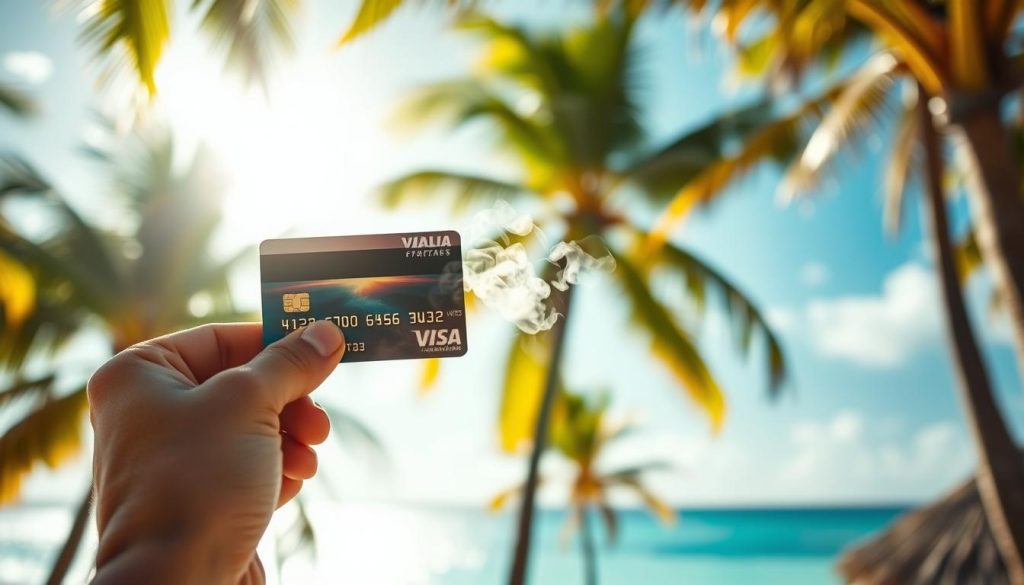
Identifying Common Transaction Fees
One of the most common hidden costs is the foreign transaction fee. This fee is charged when you use your card in a different country, typically ranging from 1% to 3% of the purchase amount. For example, dining at a hotel restaurant or booking a tour on the island can trigger these fees.
ATM withdrawals also come with their own set of charges. Both the local bank and your home bank may charge a fee, which can range from $3 to $10 per withdrawal. To minimize these costs, consider withdrawing larger amounts less frequently or using a travel-friendly debit card that reimburses ATM fees.
Here are some tips to avoid hidden costs:
- Always check your bank statements for unexpected charges.
- Choose reputable exchange centers or banks for currency conversion.
- Ask about fees before proceeding with a transaction at any establishment.
Understanding these costs in advance can help you make smarter financial decisions. For instance, using a no-fee card for international transactions can save you money on every purchase. Additionally, monitoring the exchange rate can help you get the best deal when converting currency.
“A little preparation can go a long way in saving you from unnecessary fees during your travels.”
By planning ahead and choosing the right payment options, you can enjoy your trip without financial stress. Always carry a mix of cash and cards to handle any situation, whether you’re exploring the island or relaxing at a beachside restaurant.
Safe and Efficient ATM Use on the Island
Using ATMs safely and efficiently is crucial for managing your money while traveling. Whether you’re exploring the island or staying at a hotel, knowing how to access cash securely can make your trip smoother. Here’s how to use ATMs wisely and avoid unnecessary fees.
ATM Safety Tips and Best Practices
When using an ATM, always prioritize safety. Choose machines in well-lit, secure areas, such as those inside a bank or monitored public spaces. Shield your PIN with your hand to prevent anyone from seeing it. This simple step protects your card information from potential theft.
Before inserting your card, inspect the machine for any unusual devices or attachments. Fraudsters sometimes install skimming devices to steal your information. If something looks off, find another ATM. It’s better to be cautious than risk losing your money.
Minimize the amount of cash you withdraw at once. Carrying large sums increases the risk of loss or theft. Instead, withdraw smaller amounts as needed. This approach also helps you manage your budget more effectively.
Choosing Between Local and Hotel ATMs
When deciding where to withdraw cash, consider the pros and cons of local bank ATMs versus those at your hotel. Local bank ATMs often offer better exchange rates and lower fees. They’re a great option if you’re looking to save on transaction costs.
On the other hand, hotel ATMs are convenient but may charge higher fees. They’re ideal if you need quick access to cash without leaving your accommodation. Always check for additional service charges before using any ATM.
Here’s a quick comparison:
- Local Bank ATMs: Lower fees, better rates, but may require travel.
- Hotel ATMs: Convenient, but often come with higher fees.
Having a backup payment method, like a credit card, ensures you’re prepared if an ATM is out of service. This simple step can save you time and stress during your travel.
“A little preparation can go a long way in ensuring a seamless and enjoyable travel experience.”
By following these tips, you can use ATMs safely and efficiently, making the most of your time on the island.
Tips for Handling Payments in Tourist Areas Versus Local Markets
Payment preferences vary between tourist spots and local markets. Knowing when to use cash or cards can save you time and money. This guide helps you navigate payment options in different areas, ensuring a smooth travel experience.

Where Cards Are Widely Accepted
In busy tourist areas, cards are the go-to payment method. Hotels, upscale restaurants, and major shops often accept credit cards for convenience. This is especially helpful for larger purchases, like booking a hotel or dining at a fine restaurant.
Using a card also offers added security. You don’t need to carry large amounts of cash, reducing the risk of loss or theft. Plus, many cards come with rewards or cashback programs, making them a smart choice for frequent travelers.
When Cash is Preferred for Small Purchases
In local markets or smaller establishments, cash is often the preferred payment method. Vendors may avoid card processing fees by asking for cash. This is common in rural areas or at street markets where transactions are smaller.
Carrying small denominations of cash is also useful for tipping. Whether it’s a taxi driver or a waiter at a restaurant, having cash on hand ensures you can show appreciation without hassle.
Here’s a quick comparison of payment options:
- Cards: Ideal for tourist areas, hotels, and larger purchases.
- Cash: Best for local markets, tips, and small transactions.
Understanding these differences helps you decide which method to use based on location and purchase size. Always carry both cash and cards to handle any situation. This balanced approach ensures you’re prepared for every part of your trip.
“A little preparation goes a long way in ensuring a seamless and enjoyable travel experience.”
Planning Your Trip: Financial Preparations and Local Insights
Planning your finances before your trip can make all the difference in ensuring a smooth and enjoyable experience. From budgeting daily expenses to understanding local banking guidelines, a little preparation goes a long way. Here’s how to set yourself up for financial success on your next adventure.
Budgeting and Pre-Trip Financial Setup
Start by creating a detailed budget that covers daily expenses, accommodations, and emergencies. This helps you avoid overspending and ensures you have enough money for your entire trip. Consider using online budgeting tools or apps to track your spending and stay on track.
Consulting with your local bank is a good idea. They can provide insights into favorable exchange deals and help you avoid unnecessary fees. For example, some banks offer travel-friendly cards with no foreign transaction fees, saving you money on every purchase.
Here are some essential steps to prepare your finances:
- Set aside funds for daily expenses and unexpected costs.
- Monitor the exchange rate to get the best deal when converting currency.
- Carry a mix of cash and cards to handle different payment scenarios.
Local Banking Guidelines and Exchange Tips
Understanding local banking practices can save you time and money. Research the currency used on the island and familiarize yourself with common exchange options. For instance, local banks often offer better rates than airport kiosks or tourist hubs.
Gather insights from travel forums or trusted guides to learn about the best places to exchange money. This can help you avoid hidden fees and get the most value for your currency. Additionally, notify your bank about your travel plans to prevent issues with your card.
Here’s a quick comparison of exchange options:
- Local Banks: Competitive rates and low fees.
- Cambio Centers: Convenient and often offer better deals.
- Airport Kiosks: Less favorable rates and higher fees.
By planning ahead and choosing the right option, you can enjoy a stress-free trip without worrying about finances.
“A little preparation can go a long way in ensuring a seamless and enjoyable travel experience.”
Learning from Local and Insider Experiences
Learning from others’ experiences can save you time and money during your travels. Real-world stories and expert advice provide practical insights into managing finances effectively. Whether it’s handling currency or choosing the right card, these tips can make your trip smoother.
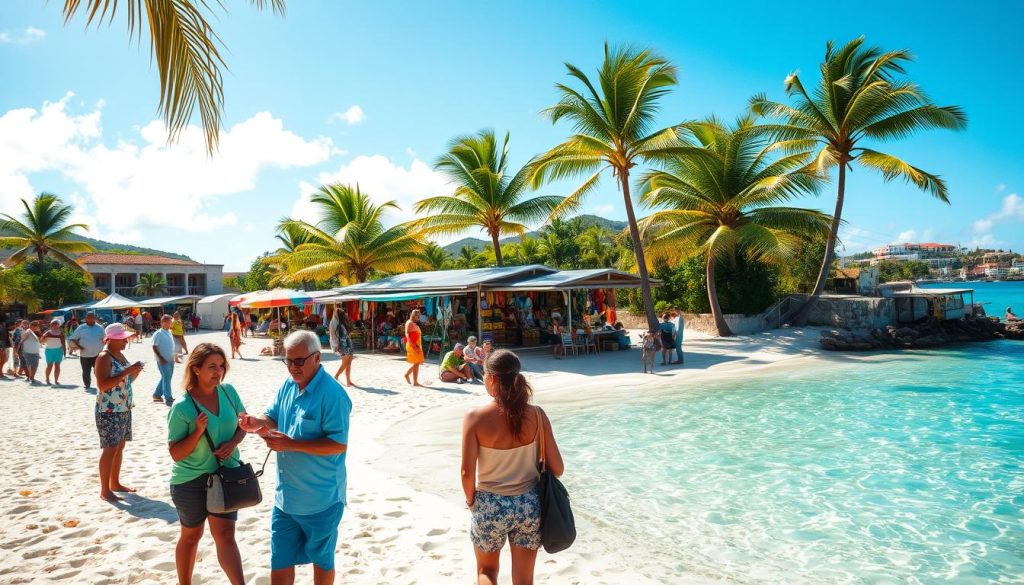
Real Traveler Stories and Trip Reports
Many travelers share their successes and challenges online. For example, one visitor saved money by exchanging currency at local banks instead of airport kiosks. Another traveler avoided high fees by using a no-foreign-transaction-fee card for all purchases.
These stories highlight the importance of planning ahead. By learning from others, you can avoid common pitfalls and make smarter financial decisions.
Expert Recommendations for Financial Success
Local experts suggest carrying a mix of cash and cards. This ensures you’re prepared for any situation, whether dining at a hotel restaurant or shopping at a local market. They also recommend monitoring the exchange rate to get the best deal.
Here’s a summary of key tips:
| Tip | Benefit |
|---|---|
| Use local banks for currency exchange | Better rates, lower fees |
| Carry a no-fee card | Saves on transaction costs |
| Monitor the exchange rate | Maximizes your money |
“A little preparation can go a long way in ensuring a seamless and enjoyable travel experience.”
By following these recommendations, you can enhance your experience and focus on enjoying your time on the island.
Conclusion
Mastering your finances before your trip ensures a smooth and enjoyable experience. This guide has equipped you with essential tips to handle money like a pro, from understanding the local currency to choosing the right payment options. Whether you’re dining at a hotel or exploring the island, these insights will help you avoid unnecessary stress.
Planning ahead is key. Monitor the exchange rate, carry a mix of cash and cards, and choose reputable exchange centers to save on fees. By following these steps, you can focus on enjoying your trip without financial worries.
If you need more details, revisit specific sections of this guide. With proper preparation, managing your finances will be seamless, leaving you free to create unforgettable memories.
The above is subject to change.
Check back often to TRAVEL.COM for the latest travel tips and deals.
